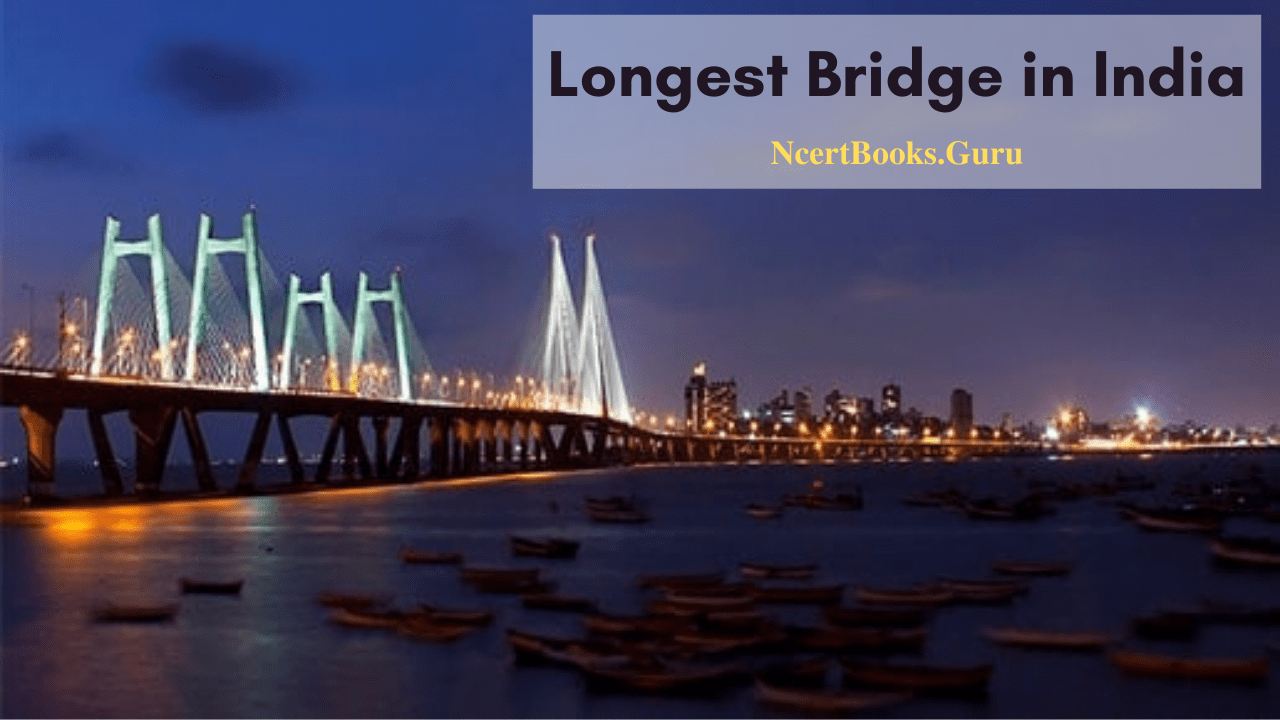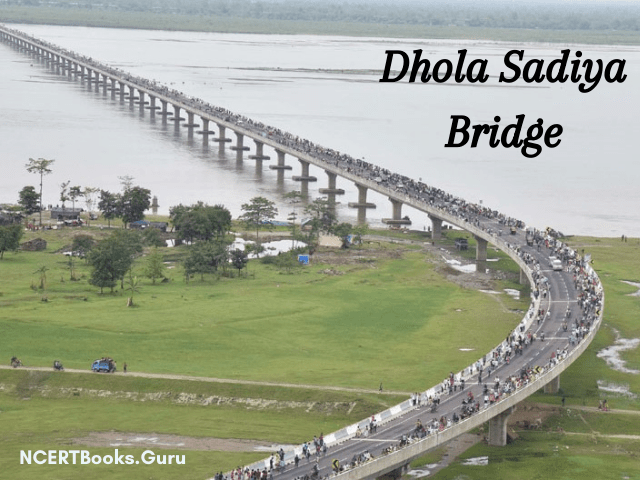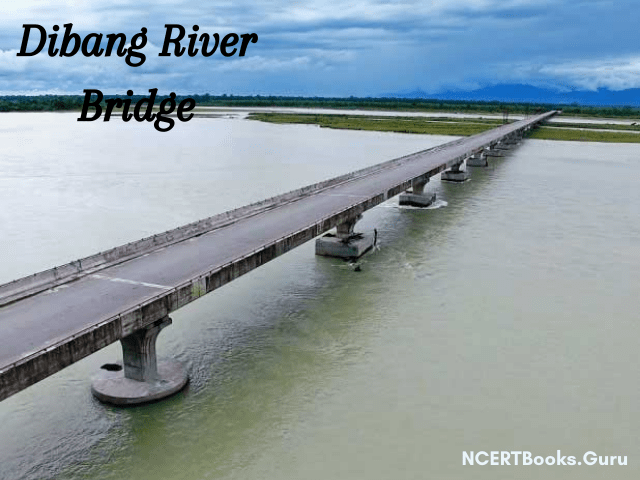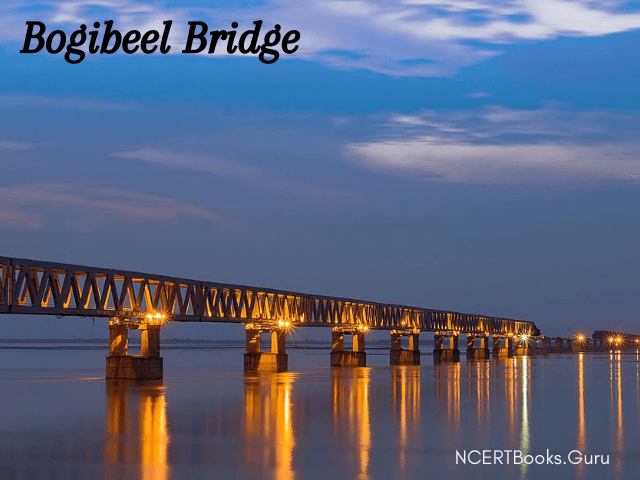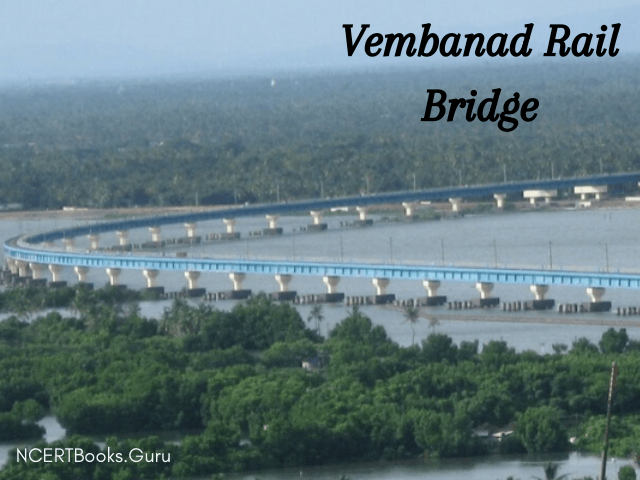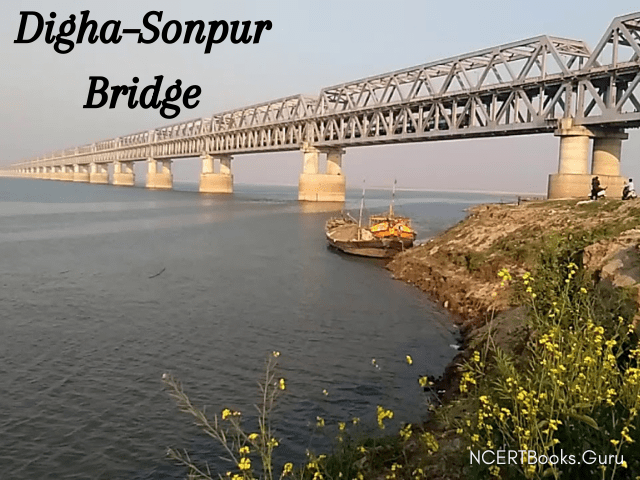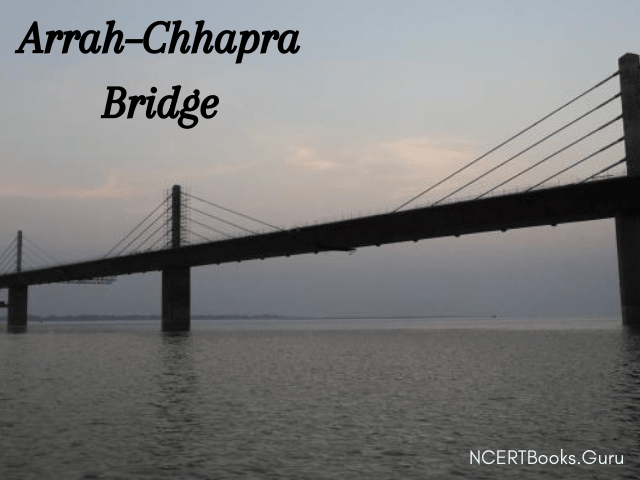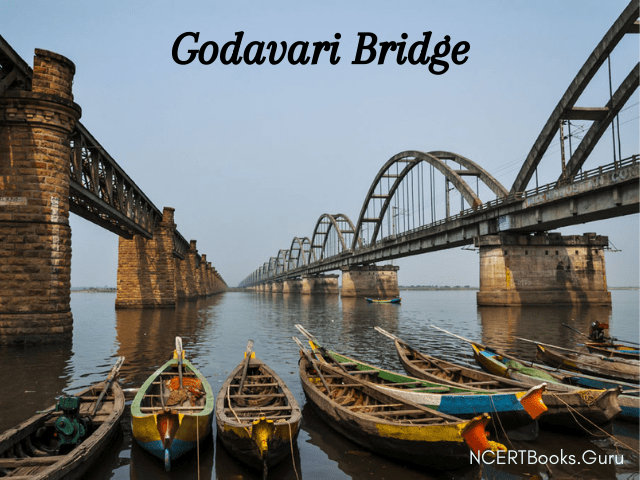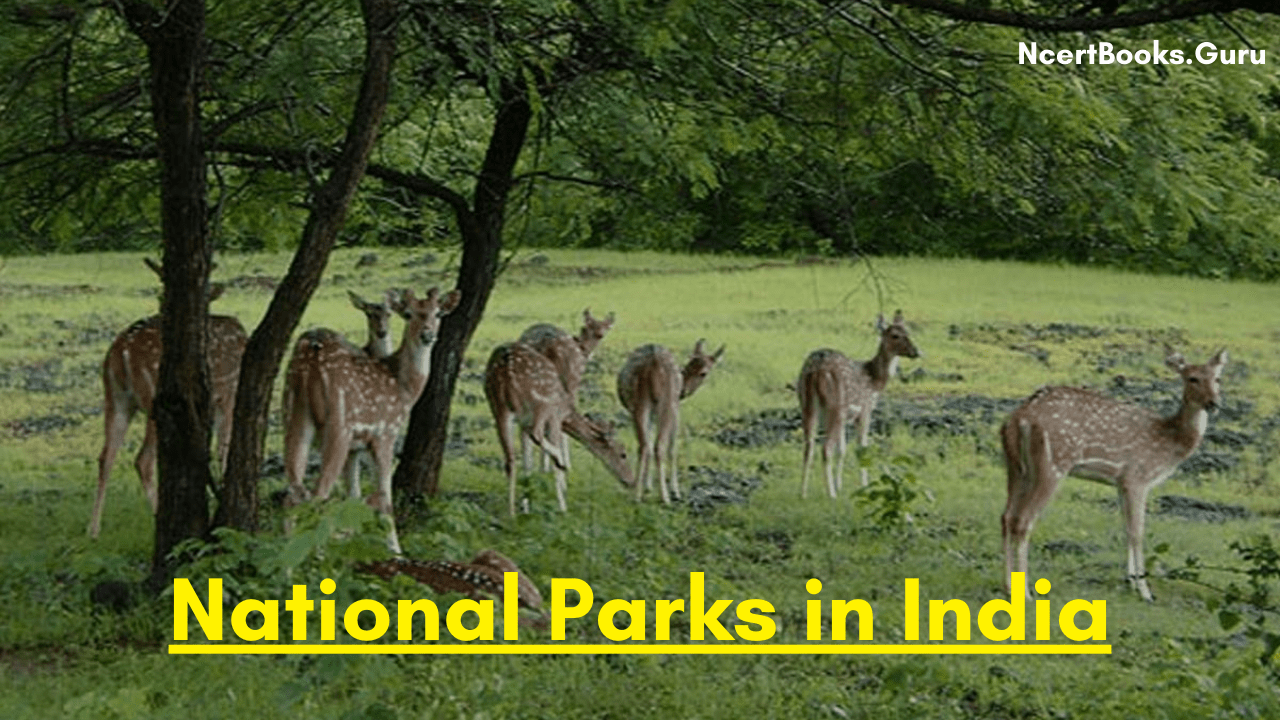| State/Union Territory |
Total Wildlife Sanctuary |
Wildlife Sanctuary Name |
Year |
| Andaman and Nicobar |
96 |
Arial Island Wildlife Sanctuary |
1987 |
| Bamboo Island Wildlife Sanctuary |
1987 |
| Barren Island Wildlife Sanctuary |
1987 |
| Battimalv Island Wildlife Sanctuary |
1987 |
| Belle Island Wildlife Sanctuary |
1987 |
| Benett Island Wildlife Sanctuary |
1987 |
| Bingham Island Wildlife Sanctuary |
1987 |
| Blister Island Wildlife Sanctuary |
1987 |
| Bluff Island Wildlife Sanctuary |
1987 |
| Bondoville Island Wildlife Sanctuary |
1987 |
| Brush Island Wildlife Sanctuary |
1987 |
| Buchanan Island Wildlife Sanctuary |
1987 |
| Chanel Island Wildlife Sanctuary |
1987 |
| Cinque Islands Wildlife Sanctuary |
1987 |
| Clyde Island Wildlife Sanctuary |
1987 |
| Cone Island Wildlife Sanctuary |
1987 |
| Curlew (B.P.) Island Wildlife Sanctuary |
1987 |
| Curlew Island Wildlife Sanctuary |
1987 |
| Cuthbert Bay Wildlife Sanctuary |
1987 |
| Defence Island Wildlife Sanctuary |
1987 |
| Dot Island Wildlife Sanctuary |
1987 |
| Dottrell Island Wildlife Sanctuary |
1987 |
| Duncan Island Wildlife Sanctuary |
1987 |
| East Island Wildlife Sanctuary |
1987 |
| East of Inglis Island Wildlife Sanctuary |
1987 |
| Egg Island Wildlife Sanctuary |
1987 |
| Elat Island Wildlife Sanctuary |
1987 |
| Entrance Island Wildlife Sanctuary |
1987 |
| Gander Island Wildlife Sanctuary |
1987 |
| Galathea Bay Wildlife Sanctuary |
1987 |
| Girjan Island Wildlife Sanctuary |
1987 |
| Goose Island Wildlife Sanctuary |
1987 |
| Hump Island Wildlife Sanctuary |
1987 |
| Interview Island Wildlife Sanctuary |
1987 |
| James Island Wildlife Sanctuary |
1987 |
| Jungle Island Wildlife Sanctuary |
1987 |
| Kwangtung Island Wildlife Sanctuary |
1987 |
| Kyd Island Wildlife Sanctuary |
1987 |
| Landfall Island Wildlife Sanctuary |
1987 |
| Latouche Island Wildlife Sanctuary |
1987 |
| Lohabarrack (Saltwater Crocodile) Wildlife Sanctuary |
1987 |
| Mangrove Island Wildlife Sanctuary |
1987 |
| Mask Island Wildlife Sanctuary |
1987 |
| Mayo Island Wildlife Sanctuary |
1987 |
| Megapode Island Wildlife Sanctuary |
1987 |
| Montogemery Island Wildlife Sanctuary |
1987 |
| Narcondam Island Wildlife Sanctuary |
1987 |
| North Brother Island Wildlife Sanctuary |
1987 |
| North Island Wildlife Sanctuary |
1987 |
| North Reef Island Wildlife Sanctuary |
1987 |
| Oliver Island Wildlife Sanctuary |
1987 |
| Orchid Island Wildlife Sanctuary |
1987 |
| Ox Island Wildlife Sanctuary |
1987 |
| Oyster Island-I Wildlife Sanctuary |
1987 |
| Oyster Island-II Wildlife Sanctuary |
1987 |
| Paget Island Wildlife Sanctuary |
1987 |
| Parkinson Island Wildlife Sanctuary |
1987 |
| Passage Island Wildlife Sanctuary |
1987 |
| Patric Island Wildlife Sanctuary |
1987 |
| Peacock Island Wildlife Sanctuary |
1987 |
| Pitman Island Wildlife Sanctuary |
1987 |
| Point Island Wildlife Sanctuary |
1987 |
| Potanma Islands Wildlife Sanctuary |
1987 |
| Ranger Island Wildlife Sanctuary |
1987 |
| Reef Island Wildlife Sanctuary |
1987 |
| Roper Island Wildlife Sanctuary |
1987 |
| Ross Island Wildlife Sanctuary |
1987 |
| Rowe Island Wildlife Sanctuary |
1987 |
| Sandy Island Wildlife Sanctuary |
1987 |
| Sea Serpent Island Wildlife Sanctuary |
1987 |
| Shark Island Wildlife Sanctuary |
1987 |
| Shearme Island Wildlife Sanctuary |
1987 |
| Sir Hugh Rose Island Wildlife Sanctuary |
1987 |
| Sisters Island Wildlife Sanctuary |
1987 |
| Snake Island-I Wildlife Sanctuary |
1987 |
| Snake Island-II Wildlife Sanctuary |
1987 |
| South Brother Island Wildlife Sanctuary |
1987 |
| South Reef Island Wildlife Sanctuary |
1987 |
| South Sentinel Island Wildlife Sanctuary |
1987 |
| Spike Island-I Wildlife Sanctuary |
1987 |
| Spike Island-II Wildlife Sanctuary |
1987 |
| Stoat Island Wildlife Sanctuary |
1987 |
| Surat Island Wildlife Sanctuary |
1987 |
| Swamp Island Wildlife Sanctuary |
1987 |
| Table (Delgarno) Island Wildlife Sanctuary |
1987 |
| Table (Excelsior) Island Wildlife Sanctuary |
1987 |
| Talabaicha Island Wildlife Sanctuary |
1987 |
| Temple Island Wildlife Sanctuary |
1987 |
| Tillongchang Island Wildlife Sanctuary |
1987 |
| Tree Island Wildlife Sanctuary |
1987 |
| Trilby Island Wildlife Sanctuary |
1987 |
| Tuft Island Wildlife Sanctuary |
1987 |
| Turtle Islands Wildlife Sanctuary |
1987 |
| West Island Wildlife Sanctuary |
1987 |
| Wharf Island Wildlife Sanctuary |
1987 |
| White Cliff Island Wildlife Sanctuary |
1987 |
| Andhra Pradesh |
13 |
Coringa Wildlife Sanctuary |
1978 |
| Gundla Brahmeswaram Wildlife Sanctuary |
1990 |
| Kambalakonda Wildlife Sanctuary |
2002 |
| Koundinya Wildlife Sanctuary |
1990 |
| Kolleru Wildlife Sanctuary |
1953 |
| Krishna Wildlife Sanctuary |
1989 |
| Nagarjuna Sagar – Srisailam Wildlife Sanctuary |
1978 |
| Nellapattu Wildlife Sanctuary |
1976 |
| Pulicat Lake Wildlife Sanctuary |
1976 |
| Rollapadu Wildlife Sanctuary |
1988 |
| Sri Lankamalleswara Wildlife Sanctuary |
1988 |
| Sri Penusila Narasimha Wildlife Sanctuary |
1997 |
| Sri Venkateswara Wildlife Sanctuary |
1985 |
| Arunachal Pradesh |
11 |
D’Ering Memorial (Lali) Wildlife Sanctuary |
1978 |
| Dibang Wildlife Sanctuary |
1991 |
| Eagle Nest Wildlife Sanctuary |
1989 |
| Itanagar Wildlife Sanctuary |
1978 |
| Kamlang Wildlife Sanctuary |
1989 |
| Kane Wildlife Sanctuary |
1991 |
| Mahao Wildlife Sanctuary |
1980 |
| Pakke (Pakhui) Wildlife Sanctuary |
1977 |
| Sessa Orchid Wildlife Sanctuary |
1989 |
| Tale Wildlife Sanctuary |
1995 |
| Yordi Rabe Supse Wildlife Sanctuary |
1996 |
| Assam |
18 |
Amchang Wildlife Sanctuary |
2004 |
| Barail Wildlife Sanctuary |
2004 |
| Barnadi Wildlife Sanctuary |
1980 |
| Bherjan-Borajan-Padumoni Wildlife Sanctuary |
1999 |
| Burachapari Wildlife Sanctuary |
1995 |
| Chakrasila Wildlife Sanctuary |
1994 |
| Deepor Beel Wildlife Sanctuary |
1994 |
| Dihing Patkai Wildlife Sanctuary |
2004 |
| East Karbi Anglong Wildlife Sanctuary |
2000 |
| Garampani Wildlife Sanctuary |
1952 |
| Hollongapar Gibbon Wildlife Sanctuary |
1997 |
| Lawkhowa Wildlife Sanctuary |
1972 |
| Marat Longri Wildlife Sanctuary |
2003 |
| Nambor Wildlife Sanctuary |
2000 |
| Nambor-Doigrung Wildlife Sanctuary |
2003 |
| Pabitora Wildlife Sanctuary |
1987 |
| Pani-Dihing Bird Wildlife Sanctuary |
1995 |
| Sonai Rupai Wildlife Sanctuary |
1998 |
| Bihar |
12 |
Barela Jheel Salim Ali Bird Wildlife Sanctuary |
1997 |
| Bhimbandh Wildlife Sanctuary |
1976 |
| Gautam Budha Wildlife Sanctuary |
1976 |
| Kaimur Wildlife Sanctuary |
1982 |
| Kanwarjheel Wildlife Sanctuary |
1989 |
| Kusheshwar Asthan Bird Wildlife Sanctuary |
1994 |
| Nagi Dam Wildlife Sanctuary |
1987 |
| Nakti Dam Wildlife Sanctuary |
1987 |
| Pant (Rajgir) Wildlife Sanctuary |
1978 |
| Udaipur Wildlife Sanctuary |
1978 |
| Valmiki Wildlife Sanctuary |
1978 |
| Vikramshila Gangetic Dolphin Wildlife Sanctuary |
1990 |
| Chhattisgarh |
11 |
Achanakmar Wildlife Sanctuary |
1975 |
| Badalkhol Wildlife Sanctuary |
1975 |
| Barnawapara Wildlife Sanctuary |
1976 |
| Bhairamgarh Wildlife Sanctuary |
1983 |
| Bhoramdev Wildlife Sanctuary |
2001 |
| Sarangarh – Gomardha Wildlife Sanctuary |
1975 |
| Pamed Wild Buffalo Wildlife Sanctuary |
1985 |
| Semarsot Wildlife Sanctuary |
1978 |
| Sitanadi Wildlife Sanctuary |
1974 |
| Tamor Pingla Wildlife Sanctuary |
1978 |
| Udanti Wild Buffalo Wildlife Sanct |
1985 |
| Chandigarh |
2 |
City Bird Wildlife Sanctuary |
1998 |
| Sukhna Lake Wildlife Sanctuary |
1986 |
| Dadra and Nagar Haveli |
1 |
Dadra and Nagar Haveli Wildlife Sanctuary |
2000 |
| Daman and Diu |
1 |
Fudam Wildlife Sanctuary |
1991 |
| Delhi |
1 |
Asola Bhati (Indira Priyadarshini) Wildlife Sanctuary |
1992 |
| Goa |
6 |
Bondla Wildlife Sanctuary |
1969 |
| Dr. Salim Ali Bird (Chorao) Wildlife Sanctuary |
1988 |
| Cotigaon Wildlife Sanctuary |
1968 |
| Madei Wildlife Sanctuary |
1999 |
| Bhagwan Mahavir Wildlife Sanctuary |
1967 |
| Netravali Wildlife Sanctuary |
1999 |
| Gujarat |
23 |
Balaram Ambaji Wildlife Sanctuary |
1989 |
| Barda Wildlife Sanctuary |
1979 |
| Gaga (Great Indian Bustard) Wildlife Sanctuary |
1988 |
| Gir Wildlife Sanctuary |
1965 |
| Girnar Wildlife Sanctuary |
2008 |
| Hingolgadh Wildlife Sanctuary |
1980 |
| Jambughoda Wildlife Sanctuary |
1990 |
| Jessore Sloth Bear Wildlife Sanctuary |
1978 |
| Kachchh (Lala) Great Indian Bustard Wildlife Sanctuary |
1995 |
| Kachchh Desert Wildlife Sanctuary |
1986 |
| Khijadiya Bird Wildlife Sanctuary |
1981 |
| Marine (Gulf of Kachchh) Wildlife Sanctuary |
1980 |
| Mitiyala Wildlife Sanctuary |
2004 |
| Nal Sarovar Bird Wildlife Sanctuary |
1969 |
| Narayan Sarovar Chinkara Wildlife Sanctuary |
1995 |
| Paniya Wildlife Sanctuary |
1989 |
| Porbandar Bird Wildlife Sanctuary |
1988 |
| Purna Wildlife Sanctuary |
1990 |
| Rampara Vidi Wildlife Sanctuary |
1988 |
| Ratanmahal Sloth Bear Wildlife Sanctuary |
1982 |
| Shoolpaneswar (Dhumkhal) Wildlife Sanctuary |
1982 |
| Thol Lake Wildlife Sanctuary |
1988 |
| Wild Ass Wildlife Sanctuary |
1973 |
| Haryana |
8 |
Abubshehar Wildlife Sanctuary |
1987 |
| Bhindawas Lake Wildlife Sanctuary |
1986 |
| Bir Shikargarh Wildlife Sanctuary |
1987 |
| Chhilchhila Lake Wildlife Sanctuary |
1986 |
| Kalesar Wildlife Sanctuary |
1996 |
| Khaparwas Wildlife Sanctuary |
1991 |
| Morni Hills (Khol-Hi-Raitan) Wildlife Sanctuary |
2004 |
| Nahar Wildlife Sanctuary |
1987 |
| Himachal Pradesh |
28 |
Bandli Wildlife Sanctuary |
1962 |
| Chail Wildlife Sanctuary |
1976 |
| Chandratal Wildlife Sanctuary |
2007 |
| Churdhar Wildlife Sanctuary |
1985 |
| Daranghati Wildlife Sanctuary |
1962 |
| Dhauladhar Wildlife Sanctuary |
1994 |
| Gamgul Siyabehi Wildlife Sanctuary |
1962 |
| Kais Wildlife Sanctuary |
1954 |
| Kalatop-Khajjiar Wildlife Sanctuary |
1958 |
| Kanawar Wildlife Sanctuary |
1954 |
| Khokhan Wildlife Sanctuary |
1954 |
| Kibber Wildlife Sanctuary |
1992 |
| Kugti Wildlife Sanctuary |
1962 |
| Lippa Asrang Wildlife Sanctuary |
1962 |
| Majathal Wildlife Sanctuary |
1954 |
| Manali Wildlife Sanctuary |
1954 |
| Nargu Wildlife Sanctuary |
1962 |
| Pong Dam Lake Wildlife Sanctuary |
1982 |
| Renuka Wildlife Sanctuary |
2013 |
| Rupi Bhaba Wildlife Sanctuary |
1982 |
| Sainj Wildlife Sanctuary |
1994 |
| Rakchham Chitkul (Sangla Valley) Wildlife Sanctuary |
1989 |
| Sech Tuan Nala Wildlife Sanctuary |
1962 |
| Shikari Devi Wildlife Sanctuary |
1962 |
| Shimla Water Catchment Wildlife Sanctuary |
1958 |
| Talra Wildlife Sanctuary |
1962 |
| Tirthan Wildlife Sanctuary |
1992 |
| Tundah Wildlife Sanctuary |
1962 |
| Jammu and Kashmir |
15 |
Baltal-Thajwas Wildlife Sanctuary |
1987 |
| Changthang Wildlife Sanctuary |
1987 |
| Gulmarg Wildlife Sanctuary |
1987 |
| Hirapora Wildlife Sanctuary |
1987 |
| Hokersar Wildlife Sanctuary |
1992 |
| Jasrota Wildlife Sanctuary |
1987 |
| Karakoram (Nubra Shyok) Wildlife Sanctuary |
1987 |
| Lachipora Wildlife Sanctuary |
1987 |
| Limber Wildlife Sanctuary |
1987 |
| Nandni Wildlife Sanctuary |
1981 |
| Overa-Aru Wildlife Sanctuary |
1987 |
| Rajparian (Daksum) Wildlife Sanctuary |
2002 |
| Ramnagar Rakha Wildlife Sanctuary |
1981 |
| Surinsar Mansar Wildlife Sanctuary |
1981 |
| Trikuta Wildlife Sanctuary |
1981 |
| Jharkhand |
11 |
Dalma Wildlife Sanctuary |
1976 |
| Gautam Budha Wildlife Sanctuary |
1976 |
| Hazaribagh Wildlife Sanctuary |
1976 |
| Kodarma Wildlife Sanctuary |
1985 |
| Lawalong Wildlife Sanctuary |
1978 |
| Mahuadanr Wolf Wildlife Sanctuary |
1976 |
| Palamau Wildlife Sanctuary |
1976 |
| Palkot Wildlife Sanctuary |
1990 |
| Parasnath Wildlife Sanctuary |
1984 |
| Topchanchi Wildlife Sanctuary |
1978 |
| Udhwa Lake Bird Wildlife Sanctuary |
1991 |
| Karnataka |
30 |
Adichunchunagiri Peacock Wildlife Sanctuary |
1981 |
| Arabithittu Wildlife Sanctuary |
1985 |
| Attiveri Bird Wildlife Sanctuary |
1994 |
| Bhadra Wildlife Sanctuary |
1974 |
| Bhimgad Wildlife Sanctuary |
2010 |
| Biligiri Rangaswamy Temple (B.R.T.) Wildlife Sanctuary |
1987 |
| Brahmagiri Wildlife Sanctuary |
1974 |
| Cauvery Wildlife Sanctuary |
1987 |
| Chincholi Wildlife Sanctuary |
2012 |
| Dandeli Wildlife Sanctuary |
1987 |
| Daroji Bear Wildlife Sanctuary |
1992 |
| Ghataprabha Bird Wildlife Sanctuary |
1974 |
| Gudavi Bird Wildlife Sanctuary |
1989 |
| Gudekote Sloth Bear Wildlife Sanctuary |
2013 |
| Jogimatti Wildlife Sanctuary |
2015 |
| Malai Mahadeshwara Wildlife Sanctuary |
2013 |
| Melkote Temple Wildlife Sanctuary |
1974 |
| Mookambika Wildlife Sanctuary |
1974 |
| Nugu Wildlife Sanctuary |
1974 |
| Pushpagiri Wildlife Sanctuary |
1987 |
| Ranebennur Black Buck Wildlife Sanctuary |
1974 |
| Ranganathittu Bird Wildlife Sanctuary |
1940 |
| Ramadevara Betta Vulture Wildlife Sanctuary |
2012 |
| Rangayyanadurga Four-horned antelope Wildlife Sanctuary |
2011 |
| Sharavathi Valley Wildlife Sanctuary |
1974 |
| Shettihalli Wildlife Sanctuary |
1974 |
| Someshwara Wildlife Sanctuary |
1974 |
| Talakaveri Wildlife Sanctuary |
1987 |
| Thimlapura Wildlife Sanctuary |
2016 |
| Yadahalli Chinkara Wildlife Sanctuary |
2015 |
| Kerala |
17 |
Aralam Wildlife Sanctuary |
1984 |
| Chimmony Wildlife Sanctuary |
1984 |
| Chinnar Wildlife Sanctuary |
1984 |
| Chulannur Peafowl Wildlife Sanctuary |
2007 |
| Idukki Wildlife Sanctuary |
1976 |
| Kottiyoor Wildlife Sanctuary |
2011 |
| Kurinjimala Wildlife Sanctuary |
2006 |
| Malabar Wildlife Sanctuary |
2010 |
| Mangalavanam Bird Wildlife Sanctuary |
2004 |
| Neyyar Wildlife Sanctuary |
1958 |
| Parambikulam Wildlife Sanctuary |
1973 |
| Peechi-Vazhani Wildlife Sanctuary |
1958 |
| Peppara Wildlife Sanctuary |
1983 |
| Periyar Wildlife Sanctuary |
1950 |
| Shendurney Wildlife Sanctuary |
1984 |
| Thattekad Bird Wildlife Sanctuary |
1983 |
| Wayanad Wildlife Sanctuary |
1973 |
| Lakshadweep |
1 |
Pitti (Bird Island) Wildlife Sanctuary |
1995 |
| Madhya Pradesh |
25 |
Bagdara Wildlife Sanctuary |
1978 |
| Bori Wildlife Sanctuary |
1977 |
| Gandhi Sagar Wildlife Sanctuary |
1981 |
| Ghatigaon Wildlife Sanctuary |
1981 |
| Karera Wildlife Sanctuary |
1981 |
| Ken Gharial Wildlife Sanctuary |
1981 |
| Kheoni Wildlife Sanctuary |
1982 |
| Narsighgarh Wildlife Sanctuary |
1978 |
| National Chambal Wildlife Sanctuary |
1978 |
| Noradehi Wildlife Sanctuary |
1984 |
| Orcha Wildlife Sanctuary |
1994 |
| Pachmarhi Wildlife Sanctuary |
1977 |
| Kuno Wildlife Sanctuary |
1981 |
| Panna (Gangau) Wildlife Sanctuary |
1979 |
| Panpatha Wildlife Sanctuary |
1983 |
| Pench Wildlife Sanctuary |
1975 |
| Phen Wildlife Sanctuary |
1983 |
| Ralamandal Wildlife Sanctuary |
1989 |
| Ratapani Wildlife Sanctuary |
1978 |
| Sailana Wildlife Sanctuary |
1983 |
| Sanjay Dubari Wildlife Sanctuary |
1975 |
| Sardarpur Wildlife Sanctuary |
1983 |
| Singhori Wildlife Sanctuary |
1976 |
| Son Gharial Wildlife Sanctuary |
1981 |
| Veerangna Durgavati Wildlife Sanctuary |
1997 |
| Maharashtra |
42 |
Amba Barwa Wildlife Sanctuary |
1997 |
| Andhari Wildlife Sanctuary |
1986 |
| Aner Dam Wildlife Sanctuary |
1986 |
| Bhamragarh Wildlife Sanctuary |
1997 |
| Bhimashankar Wildlife Sanctuary |
1985 |
| Bor Wildlife Sanctuary |
1970 |
| Chaprala Wildlife Sanctuary |
1986 |
| Deulgaon-Rehekuri Wildlife Sanctuary |
1980 |
| Dhyanganga Wildlife Sanctuary |
1997 |
| Gangewadi New Great Indian Bustard Wildlife Sanctuary |
2015 |
| Gautala-Autramghat Wildlife Sanctuary |
1986 |
| Great Indian Bustard Wildlife Sanctuary |
1979 |
| Jaikwadi Wildlife Sanctuary |
1986 |
| Kalsubai Harishchandragad Wildlife Sanctuary |
1986 |
| Karnala Fort Wildlife Sanctuary |
1968 |
| Karanja Sohal Blackbuck Wildlife Sanctuary |
2000 |
| Katepurna Wildlife Sanctuary |
1988 |
| Koyana Wildlife Sanctuary |
1985 |
| Lonar Wildlife Sanctuary |
2000 |
| Malvan Marine Wildlife Sanctuary |
1987 |
| Mansingdeo Wildlife Sanctuary |
2010 |
| Mayureswar Supe Wildlife Sanctuary |
1997 |
| Melghat Wildlife Sanctuary |
1985 |
| Nagzira Wildlife Sanctuary |
1970 |
| Naigaon Peacock Wildlife Sanctuary |
1994 |
| Nandur Madhameshwar Wildlife Sanctuary |
1986 |
| Narnala Bird Wildlife Sanctuary |
1997 |
| Nawegaon Wildlife Sanctuary |
2012 |
| New Bor Wildlife Sanctuary |
2012 |
| New Nagzira Wildlife Sanctuary |
2012 |
| Painganga Wildlife Sanctuary |
1986 |
| Phansad Wildlife Sanctuary |
1986 |
| Radhanagari Wildlife Sanctuary |
1958 |
| Sagareshwar Wildlife Sanctuary |
1985 |
| Tansa Wildlife Sanctuary |
1970 |
| Thane Creek Flamingo Wildlife Sanctuary |
2015 |
| Tipeshwar Wildlife Sanctuary |
1997 |
| Tungareshwar Wildlife Sanctuary |
2003 |
| Yawal Wildlife Sanctuary |
1969 |
| Yedsi Ramlin Ghat Wildlife Sanctuary |
1997 |
| Umred-Kharngla Wildlife Sanctuary |
2012 |
| Wan Wildlife Sanctuary |
1997 |
| Manipur |
2 |
Yangoupokpi Lokchao Wildlife Sanctuary |
1989 |
| Khongjaingamba Ching Wildlife Sanctuary |
2016 |
| Meghalaya |
4 |
Baghmara Pitcher Plant Wildlife Sanctuary |
1984 |
| Narpuh Wildlife Sanctuary |
2015 |
| Nongkhyllem Wildlife Sanctuary |
1981 |
| Siju Wildlife Sanctuary |
1979 |
| Mizoram |
8 |
Dampa Wildlife Sanctuary |
1985 |
| Khawnglung Wildlife Sanctuary |
1992 |
| Lengteng Wildlife Sanctuary |
1999 |
| Ngengpui Wildlife Sanctuary |
1991 |
| Pualreng Wildlife Sanctuary |
2004 |
| Tawi Wildlife Sanctuary |
1978 |
| Thorangtlang Wildlife Sanctuary |
2002 |
| Tokalo Wildlife Sanctuary |
2007 |
| Nagaland |
3 |
Fakim Wildlife Sanctuary |
1980 |
| Puliebadze Wildlife Sanctuary |
1980 |
| Rangapahar Wildlife Sanctuary |
1986 |
| Odisha |
19 |
Badrama Wildlife Sanctuary |
1962 |
| Baisipalli Wildlife Sanctuary |
1981 |
| Balukhand Konark Wildlife Sanctuary |
1984 |
| Bhitarkanika Wildlife Sanctuary |
1975 |
| Chandaka Dampara Wildlife Sanctuary |
1982 |
| Chilika (Nalaban) Wildlife Sanctuary |
1987 |
| Debrigarh Wildlife Sanctuary |
1985 |
| Gahirmatha (Marine) Wildlife Sanctuary |
1997 |
| Hadgarh Wildlife Sanctuary |
1978 |
| Kapilash Wildlife Sanctuary |
1992 |
| Karlapat Wildlife Sanctuary |
1992 |
| Khalasuni Wildlife Sanctuary |
1982 |
| Kothagarh Wildlife Sanctuary |
1981 |
| Kuldiha Wildlife Sanctuary |
1984 |
| Lakhari Valley Wildlife Sanctuary |
1985 |
| Nandankanan Wildlife Sanctuary |
1979 |
| Satkosia Gorge Wildlife Sanctuary |
1976 |
| Simlipal Wildlife Sanctuary |
1979 |
| Sunabeda Wildlife Sanctuary |
1988 |
| Punjab |
13 |
Abohar Wildlife Sanctuary |
1988 |
| Bir Aishvan Wildlife Sanctuary |
1952 |
| Bir Bhadson Wildlife Sanctuary |
1952 |
| Bir Bunerheri Wildlife Sanctuary |
1952 |
| Bir Dosanjh Wildlife Sanctuary |
1952 |
| Bir Gurdialpura Wildlife Sanctuary |
1977 |
| Bir Mehaswala Wildlife Sanctuary |
1952 |
| Bir Motibagh Wildlife Sanctuary |
1952 |
| Harike Lake Wildlife Sanctuary |
1982 |
| Jhajjar Bacholi Wildlife Sanctuary |
1998 |
| Kathlaur Kushlian Wildlife Sanctuary |
2007 |
| Takhni-Rehampur Wildlife Sanctuary |
1992 |
| Nangal Wildlife Sanctuary |
2009 |
| Rajasthan |
25 |
Bassi Wildlife Sanctuary |
1988 |
| Bhensrodgarh Wildlife Sanctuary |
1983 |
| Darrah Wildlife Sanctuary |
1955 |
| Jaisamand Wildlife Sanctuary |
1955 |
| Jamwa Ramgarh Wildlife Sanctuary |
1982 |
| Jawahar Sagar Wildlife Sanctuary |
1975 |
| Kailadevi Wildlife Sanctuary |
1983 |
| Kesarbagh Wildlife Sanctuary |
1955 |
| Kumbhalgarh Wildlife Sanctuary |
1971 |
| Mount Abu Wildlife Sanctuary |
1960 |
| Nahargarh Wildlife Sanctuary |
1980 |
| National Chambal Wildlife Sanctuary |
1979 |
| Phulwari Ki Nal Wildlife Sanctuary |
1983 |
| Ramgarh Vishdhari Wildlife Sanctuary |
1982 |
| Ramsagar Wildlife Sanctuary |
1955 |
| Sajjangarh Wildlife Sanctuary |
1987 |
| Sariska Wildlife Sanctuary |
1955 |
| Sawaimadhopur Wildlife Sanctuary |
1955 |
| Sawai Man Singh Wildlife Sanctuary |
1984 |
| Shergarh Wildlife Sanctuary |
1983 |
| Sitamata Wildlife Sanctuary |
1979 |
| Tal Chhapar Wildlife Sanctuary |
1971 |
| Todgarh Raoli Wildlife Sanctuary |
1983 |
| Van Vihar Wildlife Sanctuary |
1955 |
| Bandh Baratha Wildlife Sanctuary |
1985 |
| Sikkim |
7 |
Barsey Rhododendron Wildlife Sanctuary |
1998 |
| Fambong Lho Wildlife Sanctuary |
1984 |
| Kitam Bird Wildlife Sanctuary |
2005 |
| Kyongnosla Alpine Wildlife Sanctuary |
1977 |
| Maenam Wildlife Sanctuary |
1987 |
| Pangolakha Wildlife Sanctuary |
2002 |
| Shingba Rhododendron Wildlife Sanctuary |
1984 |
| Tamil Nadu |
29 |
Cauvery North Wildlife Sanctuary |
2014 |
| Chitrangudi Bird Wildlife Sanctuary |
1989 |
| Gangaikondam Spotted Dear Wildlife Sanctuary |
2013 |
| Indira Gandhi (Annamalai) Wildlife Sanctuary |
1976 |
| Kalakad Wildlife Sanctuary |
1976 |
| Kanjirankulam Bird Wildlife Sanctuary |
1989 |
| Kanyakumari Wildlife Sanctuary |
2002 |
| Karaivetti Bird Wildlife Sanctuary |
1999 |
| Karikilli Birds Wildlife Sanctuary |
1989 |
| Kodaikanal Wildlife Sanctuary |
2013 |
| Koonthankulam-Kadankulam Wildlife Sanctuary |
1994 |
| Megamalai Wildlife Sanctuary |
2016 |
| Melaselvanoor-Keelaselvanoor Wildlife Sanctuary |
1998 |
| Mudumalai Wildlife Sanctuary |
1942 |
| Mundanthurai Wildlife Sanctuary |
1977 |
| Nellai Wildlife Sanctuary |
2015 |
| Oussudu Lake Bird Sanctuary |
2015 |
| Point Calimere Wildlife Sanctuary |
1967 |
| Pulicat Lake Bird Wildlife Sanctuary |
1980 |
| Sathyamangalam WS |
2008, 2011 |
| Srivilliputhur Grizzled Squirrel Wildlife Sanctuary |
1988 |
| Theerthangal Bird Sanctuary |
2016 |
| Sakkarakottai Bird Sanctuary |
2016 |
| Udayamarthandapuram Lake Wildlife Sanctuary |
1991 |
| Vaduvoor Birds Wildlife Sanctuary |
1991 |
| Vedanthangal Lake Birds Wildlife Sanctuary |
1936 |
| Vellanadu Blackbuck Wildlife Sanctuary |
1987 |
| Vellode Birds Wildlife Sanctuary |
1997 |
| Vettangudi Birds Wildlife Sanctuary |
1977 |
| Telangana |
9 |
Nagarjuna Sagar-Srisailam Wildlife Sanctuary |
1978 |
| Eturnagaram Wildlife Sanctuary |
1953 |
| Kawal Wildlife Sanctuary |
1965 |
| Kinnersani Wildlife Sanctuary |
1977 |
| Lanja Madugu Siwaram Wildlife Sanctuary |
1978 |
| Manjeera Crocodile Wildlife Sanctuary |
1978 |
| Pakhal Wildlife Sanctuary |
1952 |
| Pocharam Wildlife Sanctuary |
1952 |
| Pranahita Wildlife Sanctuary |
1980 |
| Tripura |
4 |
Gumti Wildlife Sanctuary |
1988 |
| Rowa Wildlife Sanctuary |
1988 |
| Sepahijala Wildlife Sanctuary |
1987 |
| Trishna Wildlife Sanctuary |
1988 |
| Uttar Pradesh |
25 |
Bakhira Wildlife Sanctuary |
1990 |
| Chandraprabha Wildlife Sanctuary |
1957 |
| Dr. Bhimrao Ambedkar Bird Wildlife Sanctuary |
2003 |
| Hastinapur Wildlife Sanctuary |
1986 |
| Kaimur Wildlife Sanctuary |
1982 |
| Katerniaghat Wildlife Sanctuary |
1976 |
| Kishanpur Wildlife Sanctuary |
1972 |
| Lakh Bahosi Bird Wildlife Sanctuary |
1988 |
| Mahavir Swami Wildlife Sanctuary |
1977 |
| National Chambal Wildlife Sanctuary |
1979 |
| Nawabganj Bird Wildlife Sanctuary |
1984 |
| Okhala Bird Wildlife Sanctuary |
1990 |
| Parvati Aranga Wildlife Sanctuary |
1990 |
| Patna Wildlife Sanctuary |
1990 |
| Pilibhit Wildlife Sanctuary |
2014 |
| Ranipur Wildlife Sanctuary |
1977 |
| Saman Bird Wildlife Sanctuary |
1990 |
| Samaspur Bird Wildlife Sanctuary |
1987 |
| Sandi Birds Wildlife Sanctuary |
1990 |
| Sohagibarwa Wildlife Sanctuary |
1987 |
| Sohelwa Wildlife Sanctuary |
1988 |
| Sur Sarovar Bird Wildlife Sanctuary |
1991 |
| Jai Prakash Narayan (Surhatal) Bird Wildlife Sanctuary |
1991 |
| Turtle Wildlife Sanctuary |
1989 |
| Vijai Sagar Wildlife Sanctuary |
1990 |
| Uttarakhand |
7 |
Askot Wildlife Sanctuary |
1986 |
| Binsar Wildlife Sanctuary |
1988 |
| Govind Pashu Vihar Wildlife Sanctuary |
1955 |
| Kedarnath Wildlife Sanctuary |
1972 |
| Mussoorie Wildlife Sanctuary |
1993 |
| Nandhaur Wildlife Sanctuary |
2012 |
| Sonanadi Wildlife Sanctuary |
1987 |
| West Bengal |
15 |
Ballavpur Wildlife Sanctuary |
1977 |
| Bethuadahari Wildlife Sanctuary |
1980 |
| Bibhuti Bhusan Wildlife Sanctuary |
1980 |
| Buxa Wildlife Sanctuary |
1986 |
| Chapramari Wildlife Sanctuary |
1976 |
| Chintamani Kar Bird Wildlife Sanctuary |
1982 |
| Haliday Island Wildlife Sanctuary |
1976 |
| Jorepokhri Salamander Wildlife Sanctuary |
1985 |
| Lothian Island Wildlife Sanctuary |
1976 |
| Mahananda Wildlife Sanctuary |
1976 |
| Raiganj Wildlife Sanctuary |
1985 |
| Ramnabagan Wildlife Sanctuary |
1981 |
| Sajnakhali Wildlife Sanctuary |
1976 |
| Senchal Wildlife Sanctuary |
1976 |
| West Sunderban Wildlife Sanctuary |
2013 |


